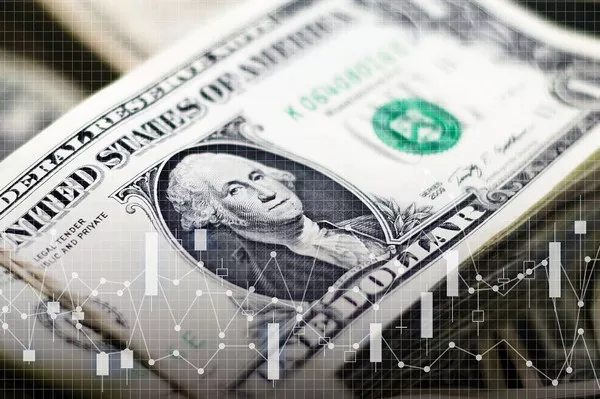Dollar coins have long held a unique place in the world of currency, serving as a tangible representation of a nation’s history and culture. However, the rareness of these coins is a topic of intrigue for numismatists and collectors worldwide. This article delves into the fascinating world of dollar coins, their history, and the factors that contribute to their rarity.
A Brief History of Dollar Coins
Dollar coins have been part of the American monetary landscape since the early days of the United States. The Coinage Act of 1792, which established the U.S. Mint, authorized the production of the first official dollar coin known as the “Flowing Hair” dollar. Over the years, various designs and compositions have graced the dollar coin, from the elegant Draped Bust and Seated Liberty dollars to the iconic Morgan and Peace dollars.
The role of dollar coins in everyday commerce has fluctuated throughout American history. In the late 18th and early 19th centuries, they were widely used and circulated alongside other denominations. However, as time passed, the popularity of the dollar coin waned, with paper money and smaller denominations becoming more common. The Susan B. Anthony dollar, introduced in 1979, and the Sacagawea dollar, introduced in 2000, were efforts to revitalize the dollar coin’s use but faced limited success.
Factors Contributing to Rarity
Mintages
The rarity of dollar coins can often be attributed to the number of coins produced during a particular year and mint location. Low mintage numbers increase the likelihood that a coin will become rare, making collectors and numismatists keenly interested in such issues. For instance, the 1804 Draped Bust dollar, considered one of the most famous and valuable coins in American numismatics, had an incredibly low mintage of just 15 coins.
Melting and Withdrawal from Circulation
Throughout history, many dollar coins were withdrawn from circulation due to various factors, including the discontinuation of their use in commerce or the tendency of the public to hoard them as collectibles. As a result, some dollar coins are exceptionally rare today. For instance, the Liberty Head gold dollar, minted from 1849 to 1889, experienced substantial melting due to fluctuations in the price of gold, making it challenging for collectors to find specimens in good condition.
Condition and Grading
The condition of a coin plays a significant role in determining its rarity and value. Coins that have been well-preserved and are in higher grades (such as Mint State or Proof) are more sought after by collectors. Even for coins with relatively high mintages, finding examples in pristine condition can be a daunting task. As an example, a common Morgan dollar from the late 19th and early 20th centuries may be readily available, but a high-grade, unblemished coin from that era can be quite scarce.
Varieties and Errors
Varieties and errors are factors that can make certain dollar coins particularly rare. A variety refers to a coin that differs in some way from the standard design, while an error is a coin with a mistake in its production, such as a double strike or off-center strike. Collectors often seek out these unique coins, and their rarity can vary significantly. For instance, the 1909-S VDB Lincoln cent, with its distinct variety and small mintage, is a highly coveted coin.
Historical Significance
Coins that have historical significance or are tied to specific events often become rare due to their limited production. For instance, the 1976 Bicentennial quarter, which celebrated the 200th anniversary of the United States, had a relatively low mintage and is considered a numismatic treasure due to its historical significance.
The Role of Collectors and Numismatists
The interest and passion of collectors and numismatists play a crucial role in preserving the history of dollar coins. These dedicated individuals meticulously catalog, grade, and study these coins, often uncovering rare and valuable specimens that might have otherwise been lost to history.
Collectors are drawn to dollar coins for various reasons, including the aesthetic appeal of the designs, the historical narratives they represent, and the thrill of the hunt for rare and elusive coins. The numismatic community actively trades and shares knowledge about dollar coins, contributing to the preservation and understanding of their history.
Notable Examples of Rare Dollar Coins
1804 Draped Bust Dollar: As previously mentioned, the 1804 Draped Bust dollar is one of the most famous and valuable American coins. Only 15 specimens were struck, and they are highly sought after by collectors, with some examples fetching millions of dollars at auction.
1893-S Morgan Dollar: The 1893-S Morgan dollar is a rare coin with a mintage of just 100,000. Due to its limited availability, it has become a prized addition to many collections.
1851-OLiberty Head Gold Dollar: The 1851-O Liberty Head gold dollar is a scarce coin with only a few known examples. It is highly coveted by collectors of gold coinage.
1794 Flowing Hair Silver Dollar: The 1794 Flowing Hair silver dollar is the first dollar coin issued by the United States Mint. It has a limited mintage and is considered a cornerstone of American numismatics.
Conclusion
Dollar coins have a rich history in the United States, with a multitude of factors contributing to their rarity. From low mintages and historical significance to varieties and errors, the world of dollar coin collecting is a treasure trove for numismatists. The dedication of collectors and the numismatic community ensures that these fascinating pieces of history continue to be appreciated and preserved for future generations. As you delve into the world of dollar coins, you’ll discover a captivating blend of art, history, and rarity that has drawn collectors and enthusiasts for centuries.


